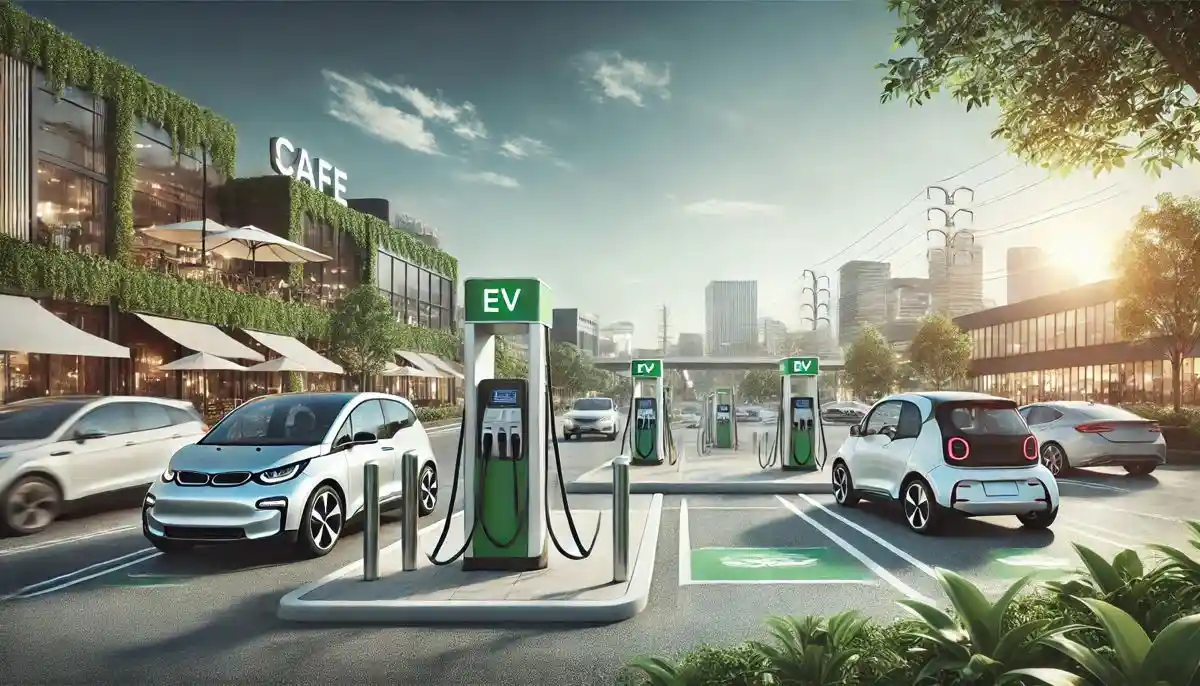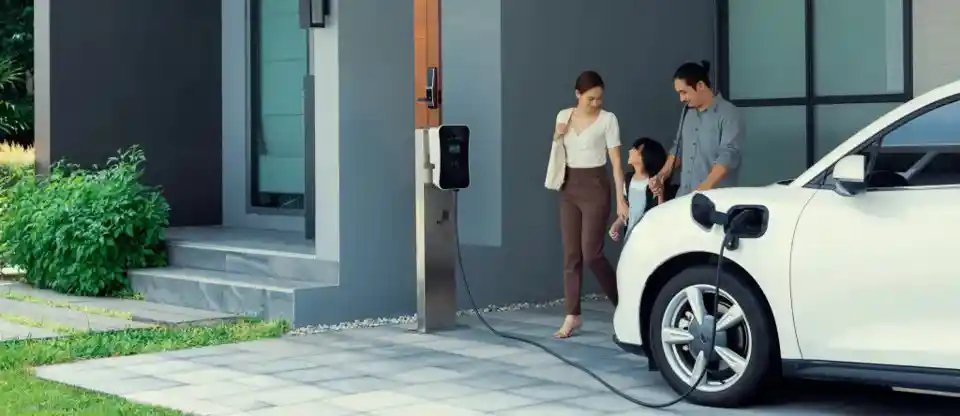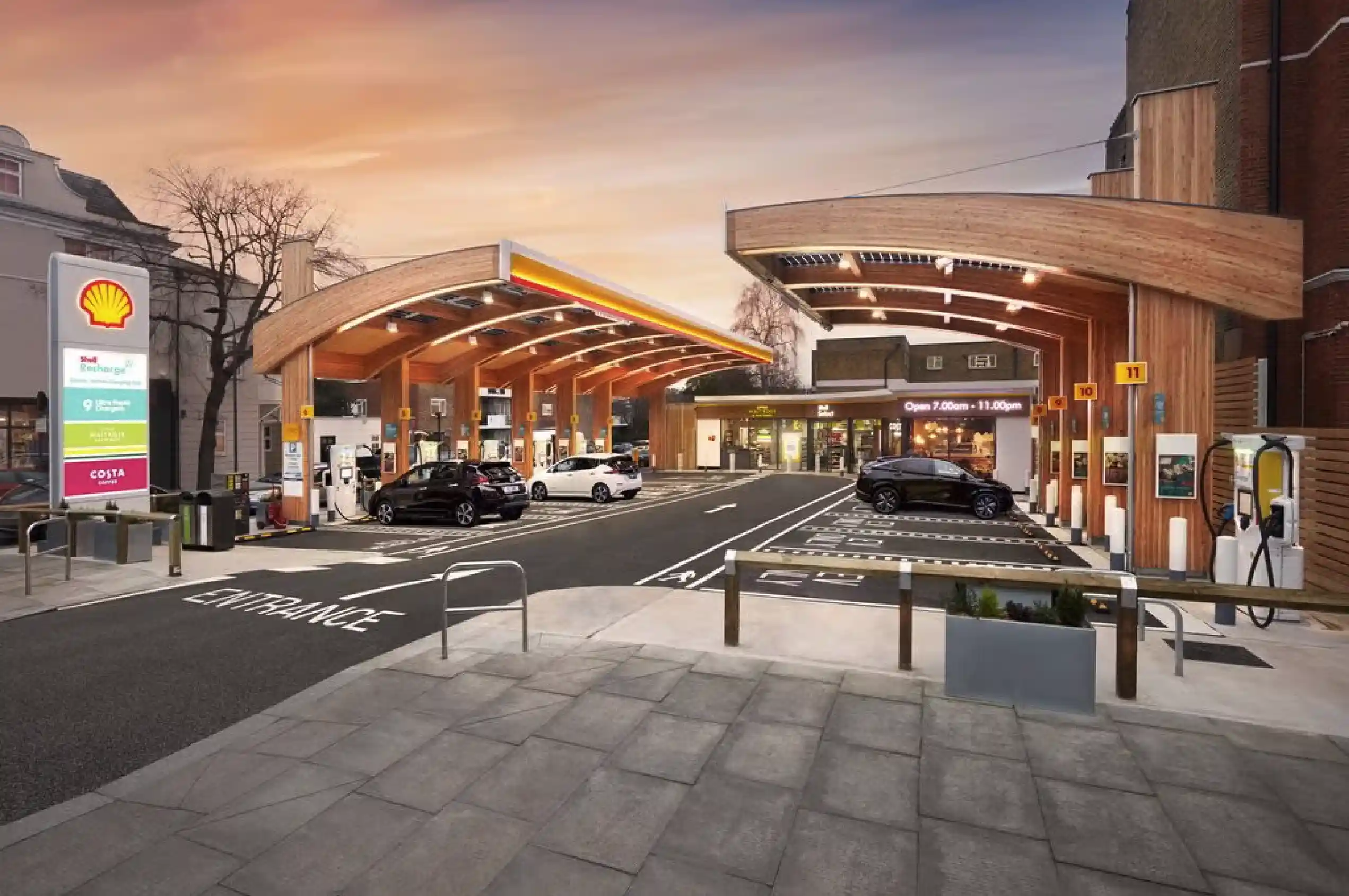Seeing the future is hard. Forgetting everything you’ve learned is harder
An essential ingredient in the transition to electric vehicles is forgetting what we’ve learned about cars altogether. For example, we’ll need to forget all of this – how you shop for a car, how you fuel a car, how you service a car, how you plan for a trip in a car. Unlearning anything is hard, just look at legacy auto OEMs. Most of their challenges come from the same things that appeared to give them an advantage at the onset of the EV market – established supply chain, manufacturing and other processes. Shifting their approach in these areas has proven more challenging than building them from scratch to fit the demands of electric vehicle production.
Similarly, the EV industry is struggling to aim a new message at our forward target audience of majority adopters – to forget what we learned in going from 0-1% EV adoption. As we exhaust the innovators and early adopters, the time has come for us to unlearn the EV sales tactics of the last decade – the ones that have succeeded in growing the market to this point. In order to attract majority adopters, the features and benefits that we extol in EVs must give confidence that this tech is ready. Majority adopters demand that a new technology is reliable, convenient, easy and cheap.
Of course, we have more work to do than just changing the way we sell EVs, we must do more than deliver a new message. The cars and the experience of driving them must actually deliver on these criteria. The role of EV charging in this is critical, and the industry has been at it for a while. But I’m not convinced that we’re focused on the result that majority adoption demands. Luckily, electric vehicle technology and the grid that supports it, are capable of delivering on reliable, convenient, easy and cheap.
EV Fueling 101: Charging an EV is easier than fueling an ICE vehicle
We need to start focusing on what is in fact a key selling point of the electric vehicle – the fact that fueling an EV is far easier than fueling an ICE vehicle, and it will save you time in all of the trips you won’t need to make to a gas station. With an EV, you start most or all trips with a full tank, rather than checking your fuel gauge to see when you need to stop. You don’t take your EV someplace to fuel up, anymore than you do your iPhone. Charging an EV battery is a feature, not a glitch. Sound familiar? Not to me, either.
Over the last decade, as EV sales increases have been driven by innovators and early adopters, the EV charging industry has largely gotten a pass as a result of the tolerance that these EV owners have for incomplete solutions. And while public chargers have performed poorly enough to even make these folks complain, the industry is doubling down, spending most of its time and energy talking about making this horrible public charging experience a little better, a little faster. We’re even spending a significant amount of public funds incentivizing the replacement of failed, previously-incentivized chargers – without considering that maybe they failed for a reason.
By focusing our EV charging efforts on these early adopters, we’ve ceded the argument to EV-skeptics, that in fact it will take you longer to charge your EV than it ever took to fill-up with gasoline. Therefore, the argument goes, EV owners need to get comfortable, read a book, have lunch. The lecture continues, “We Americans were moving too fast anyway, use your time at the (poorly named) fast charger to be mindful.” This is nonsense, and it won’t work with majority adopters. As I said in part one of this series, if the benefits of having an EV are that in spite of costing more, and being harder to use, it’s the right thing to do, or really cool, then everyone who wants one already has one. Welcome to the post-1% EV adoption rate world.

EV Charging Industry Focus
The disproportionate focus of the EV charging industry today is on DCFC as the “speed” and on public charging as the “access”, and it’s a natural follow-the-money strategy. But the money being chased is the spend on building out the EV charging infrastructure, not in the actual charging revenue from the chargers themselves. And the only private money throwing in on these sites is coming from parties which have a non-charging revenue motivation – selling EVs, C-store sales or other products and services. Most of the investment in public DCFC is coming from investors who don’t even underwrite their investments – federal taxpayers and utility ratepayers. All of this creates a compelling business story, just not one that is addressing the vast majority of EV charging.
Prospective EV drivers will of course stop at a DCFC charger at a gas station on the Turnpike on their annual vacation trip. And they’ll be glad that it’s there, just like I am. But, like me, the other 90+% of what were their previous gas station stops will be replaced by the 3 seconds that they take to plug their EV in at home each night (or maybe as rarely as once a week, depending on their driving habits and the speed of their home charger). To be clear, majority EV adopters will replace all of those stops at gas stations near home or office, with plugging in at home/work – with base charging. They’ll charge their EV at the same place where they charge their cell phone. The place where both devices sit still for 8 hours every day, along with their fuel. Those neighborhood gas stations become convenience stores and squeegee stops once you drive your EV off the lot.
So, if 90+% of EV “fill-ups” are at home or at work, what does that imply for the customer experience with EV charging? My home charger is 1,000 for 1,000, it has 100% uptime. I’ve never spent more than 3 seconds at my home charger. My EV hasn’t caused me to read more books or buy more lattes, and I’m OK with that; it hasn’t necessitated that I increase my dwell time or the amount of money that I spend in anyone’s store. My home charger is reliable, convenient, easy and cheap – exactly what majority EV adopters need to hear!

Perhaps most importantly, the grid also likes when and how I charge, and my fellow ratepayers and I have not had to invest incrementally in infrastructure to support how I charge. In fact, we’re improving utilization of the investments that we’ve already made in the electric distribution grid, which currently has a utilization rate as low as 20-30% in most places.
This is why my utility, like many others, pays me to charge this way. Could you imagine an oil company giving you all the free gas that you can pump between 10pm-6am? And take notice that utilities aren’t providing this free/cheap electricity for anything other than long, slow, repetitive, predictable and managed EV charging – base charging. As we move from 1% of US registered vehicles being electric toward our near-term target of 10%, we must avail ourselves of the benefits of this type of charging, and start making cost-effective investments in what new EV owners will demand.
Re-branding EVs by Bringing Balance to the EV Charging Infrastructure Rollout
During the last attempt at building an EV market in the late 90’s, the electric vehicle was branded as having limited range and lack of availability for use when you need it – a nice gadget to have in addition to your functional car. And even with the leaps and bounds that the EV tech has made since, this reputation persists with many. Those of us in the EV charging industry can do something about this, but it requires alignment of objectives, of purpose. We need to ensure that we are focused on cost-effective deployment of charging that is meaningful to future EV drivers.
The focus on corridor, public DCFC is a necessary piece of this work, and NEVI is poised to add significantly to this network which will help to alleviate the range anxiety that has been a part of the EV reputation that goes back a generation. The EV charging industry today seems determined to break this reputation with ever-faster DCFC in non-corridor applications, and by making the time that EV drivers waste at them more tolerable for drivers and/or more lucrative for site hosts. The amount of energy that is spent in this multi-billion-dollar effort overshadows the message that, in fact, EV charging is no harder than charging your iPhone – and certainly easier than pumping gas in your ICE vehicle. While Level 2 (and even Level 1) at-home and workplace charging may not be as sexy, nor as lucrative for those installing chargers, they are the workhorse of EV charging. They are the right solution for nearly all charging needs. And that alone should be enough to warrant the attention of the industry.
Stay tuned, next Blog in this series…..“What is the Purpose of the EV Charging Industry”
Recent Posts
Examining EV Adoption at the State Level
While we’ve made progress in growing EV adoption over the last several years, the bulk of this progress has come in a relatively...
What is the Purpose of the EV Charging Industry?
In part two of this blog series, we discussed the disproportionate focus of the EV Charging Industry (EVCI) on DCFC, even though it...
EV Charging – Industry Focus vs What EV Owners Need
An essential ingredient in the transition to electric vehicles is forgetting what we’ve learned about cars altogether. For example, we’ll need to forget...



